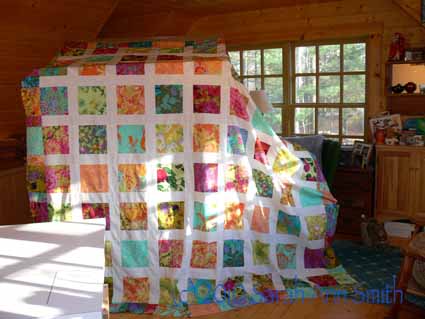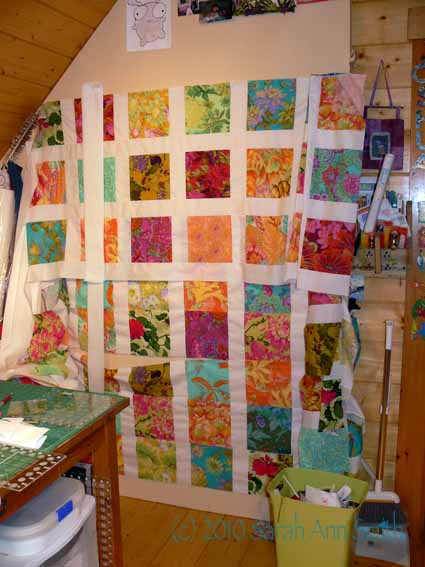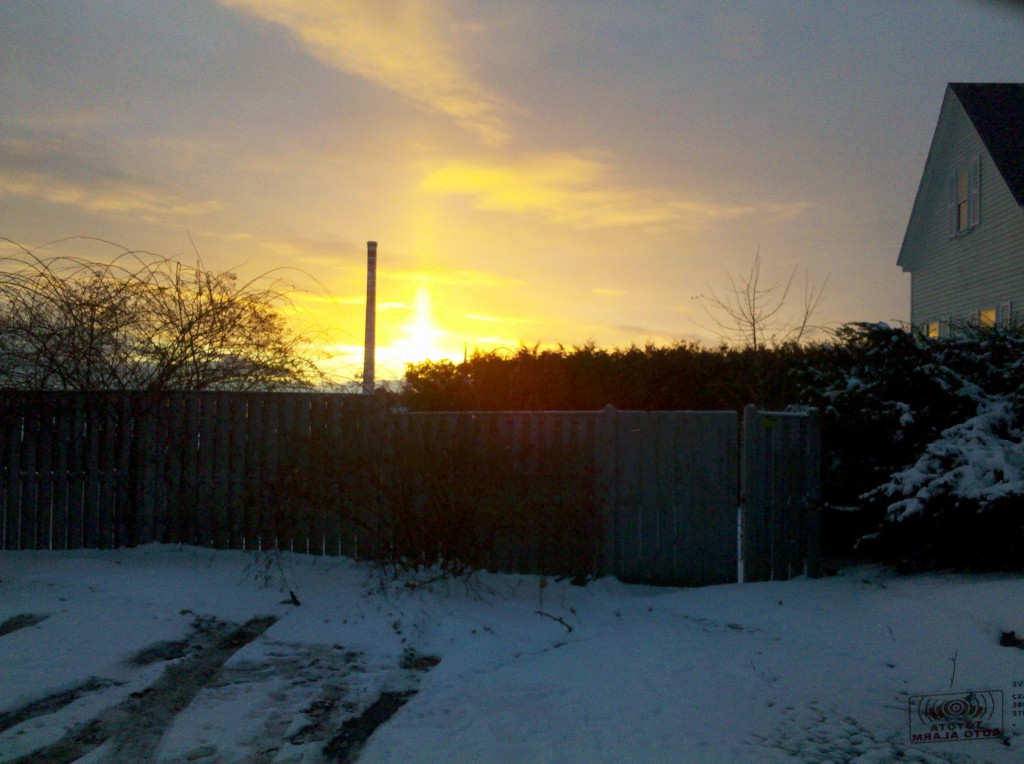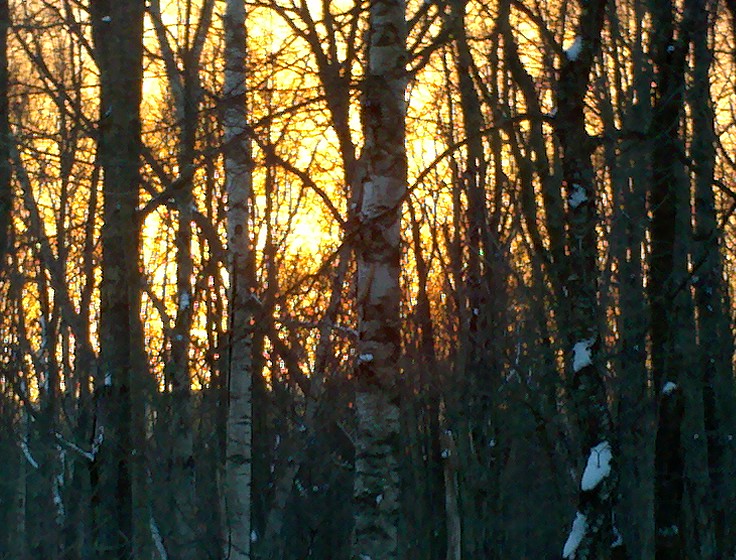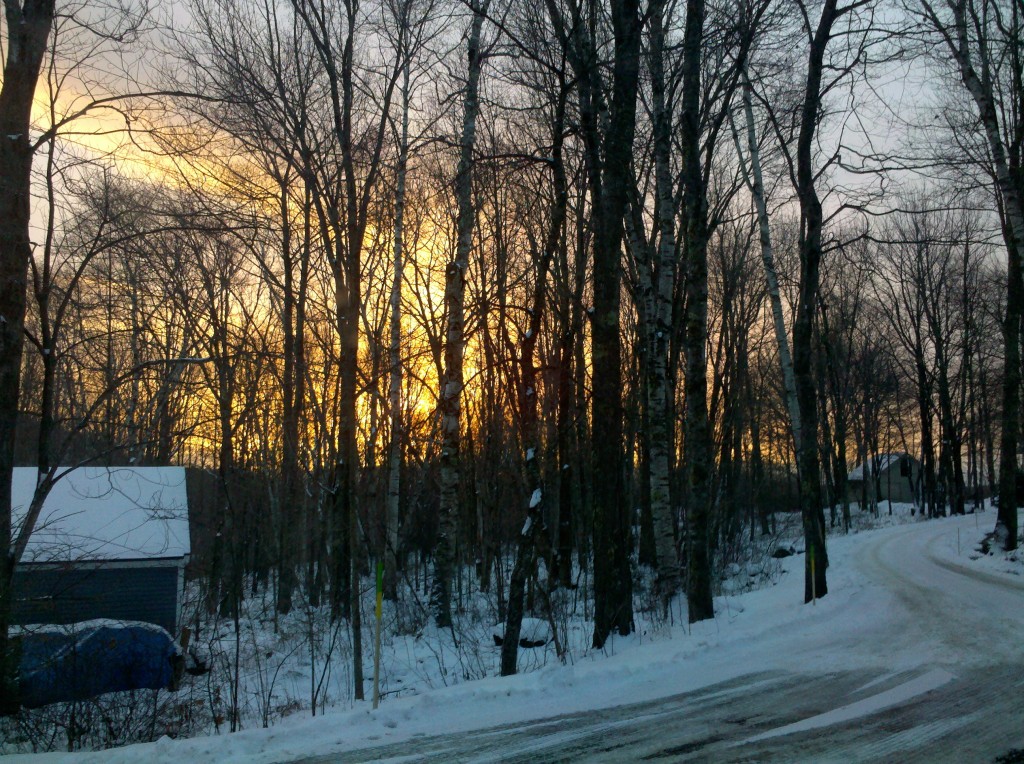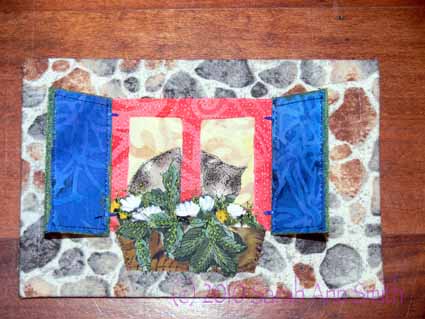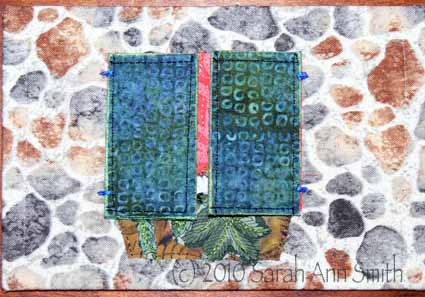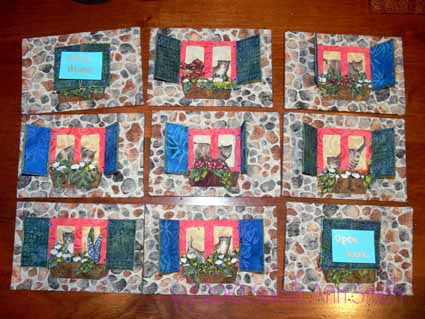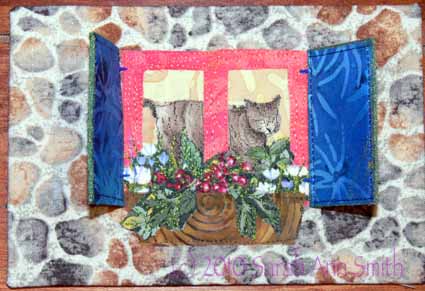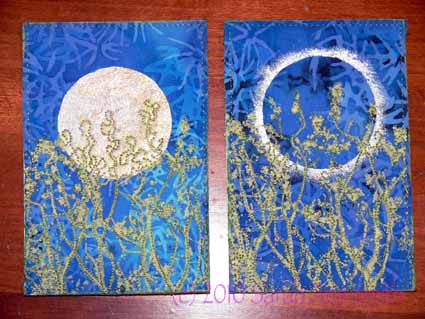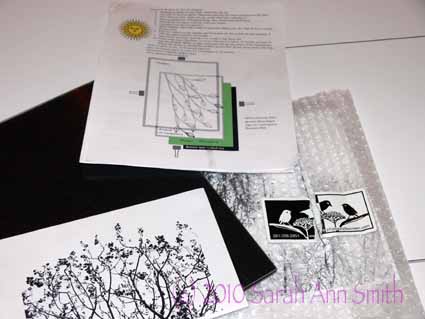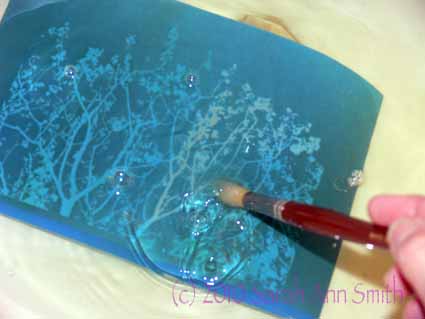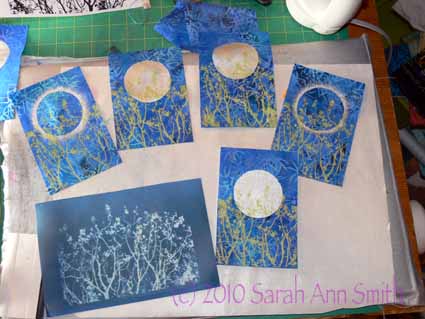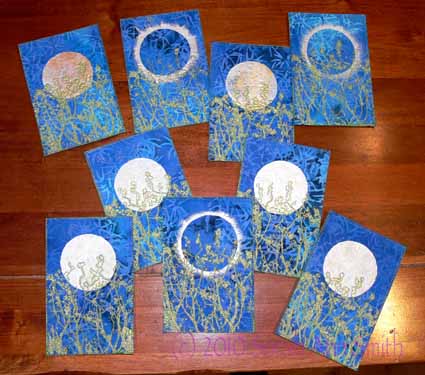The GINORMOUS quilt top
Friday, December 10th, 2010So, you might ask, does Sarah EVER make quilts any more? Art quilts? Bed quilts? Lap Quilts? ANYthing? Some days it feels like the answer is no, there is so much life happening that I can barely manage to get myself dressed and stumble through a day! But I have managed a few new class samples and a few other things. A while back, I wrote about Jenny Bowker’s totally awesome idea (seen in her blogpost, here) and my riff on the subject here and here.
Well, I had been collecting tropical colored big prints (Kaffe Fassett, Martha Negley, Phillip Jacobs and the other designers from the Westminster Fabrics crowd) for a possible project for a possible (in a couple years) new book. Well, I had (still have) this totally cool idea, but decided it was probably too complicated for a simple book project and, honestly, was more piecing work that I wanted to do. Then I made my sample a la Jenny, and had a brainstorm! A QUILT made with bright squares and simple sashing. PRESTO–fabrics re-directed to new project. So I got out my graph paper and charted out sizes for a BIG new bed quilt for us!
I decided to use squares of the tropical prints cut 8 1/2 inches, which meant I could get four pieces plus some leftover from a fat quarter (usually about 18 x 22 inches or thereabouts) of fabric. A sashing that finished at 3 inches would look good.
I was VERY careful cutting, and used my AccuFeed foot on my new Janome Horizon 7700. I even went to the extent of cutting the strips on the non-stretchy lengthwise grain of the fabric because I wanted this to be perfect. Drat! It wasn’t! The white pieces, on the bottom, were coming out 1/8″ too short, and I KNOW (and triple checked) they were cut to the same length. Luckily, I am on this great Yahoo group for 7700 owners and another one for 6500/6600/7700 owners (a lot of us on the first list are also on the second one, which was the mother list). Someone (and boy do I wish I could remember who so I can say THANK YOU) mentioned the button on the right of the machine and some instructions in the manual (yes, I had read it, but just didn’t remember this part!). If your fabric isn’t coming out even, you can turn the knob to fine-tune the dual feed! PRESTO! Problem piecing solved. I told the little red guy with forked tail and spear on my shoulder making rude noises at me to go away, that it wasn’t MY piecing at all…I just needed to learn how to be smarter than and adjust my machine!
Here’s what it looked like as I was chain piecing lots of blocks and strips:
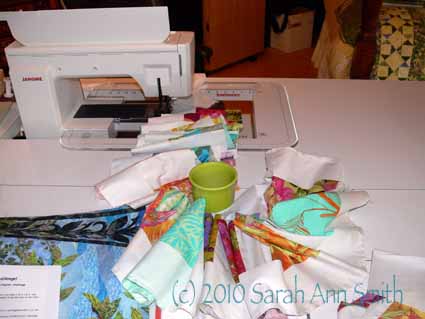 (Notice the lovely “Lemon Grass” Fiesta Ware mug amidst all those lovely prints!)
(Notice the lovely “Lemon Grass” Fiesta Ware mug amidst all those lovely prints!)
Here’s the quilt top a bit farther along,
Then I measured. SHRIEK! adjust border plans to smaller! Eliminate the white what *was* going to go all around the center blocks and go straight to the pieced (from leftover bits) border of all colorful prints! Here it is as I am ironing…. under the top is an ironing board with a 60″ wide Big Board PLUS a 39″ (one metre) wide table….and it drapes over the ends!
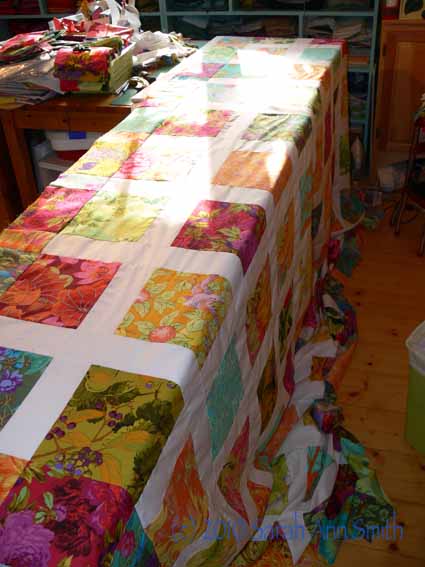 Aren’t those colors awesome??????
Aren’t those colors awesome??????
Trying to get a picture of the enormity of this thing was beyond a do-it-yourself photo shoot, so you’ll have to put up with me! The finished top is 107″ square!
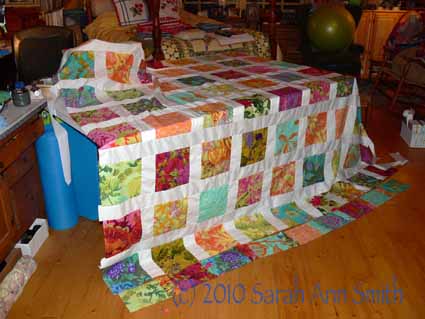
It's too big to fit...this shot, before all the borders are on, shows only 6 1/2 of the 9 color squares going across and up...so it's about 2/3 of the quilt!
That would lead to some questions:
Q1: Is Sarah sane? Answer: obviously not
Q2: How do you plan to baste this? Answer: I don’t; bless Doris and Debbie at Quilt Divas (great quilt shop in Rockland, Maine), they will baste it for me with water soluble thread on their longarm. I don’t care what it costs. I am NOT basting it. Answer, part 2: re Q1, perhaps she’s not as far gone as we thought
Q3: What about the quilting? Answer: Yes, I plan to do it, but NOT for a while. And at least the worst part, the basting, will be done by checking account! Also, my big treat once we get moved in late January and next year’s teaching is done, is to buy myself an HQ sitdown model for working on very large projects. I think a quilt 3 yards by 3 yards square qualifies. Answer to Q3, part 2: ummm…OK, Sarah is clearly certifiable; either that or she has no life
Q4: What quilting design will you use? Answer: I’ll do something similar to the sample I did up in the links posted above. When I shared an in progress picture with a friend, she was concerned that the white is TOO bright. I agree, it is! But once it is quilted the starkness will be toned down and I think it will be a lovely summer quilt.
Q5: Is Sarah insane? Answer: Ayuh!

